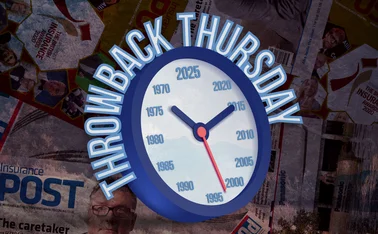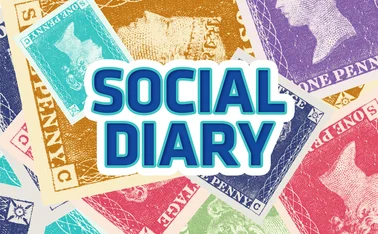
Dual Pricing: Priced Out

Dual pricing is an industry bugbear with traditional errors being replaced with deliberate pricing policies. But is it the sign of a healthy, competitive market or a practice that should be eradicated?
On the surface, dual pricing – the practice of insurers offering different quotes for identical risks – sounds like a case of some sort of software malfunction. Indeed, it is hard to understand how the same risk could be priced differently by as much as 40%, but market commentators say the practice is occurring more frequently than ever.
There is no consensus on the impact of dual pricing, some see it as a serious issue that must be eradicated, while others consider it to be a positive sign for a market that is under increasing pressure to develop closer links with its distribution partners.
Willis UK president Brendan McCafferty says that, in the past, dual pricing may have been a result of insurer error but nowadays it is more likely to be a deliberate ploy. “In the past, dual pricing occurred because insurers were capable of being clumsy with the way that they priced risks, but this is certainly a thing of the past.
“Recently, it is more a deliberate act by the insurers and reflects the underlying economics of portfolios of business. Take the analogy of supermarkets, you wouldn’t expect to buy a can of baked beans for the same price as you would in Aldi compared to Asda. There are different economics at play and increasingly insurers are recognising that in the way that they price. There is a clear economic rationale for the behaviours being exhibited.”
Sterling Insurance director of commercial and personal lines David Sweeney agrees that dual pricing can sometimes happen in error but that individual pricing is becoming much more common. “There are two reasons that this occurs,” he says.
“One is that different offices of the same insurer are not communicating properly. But also, this is something that some insurers do so they have more than one quote in the market. It comes down to the quote policy that an insurer has. Some may quote differently on different risk information and others will only have one price out in the market regardless. These are the excuses for it, but it shouldn’t be happening at all.”
Leverage advantage
However, not everyone in the market believes that dual pricing represents poor practice. McCafferty thinks that it is a good thing in a competitive environment.
“The practice could be a bad thing for brokers or clients who are on the receiving end of the worse price, but for brokers with leverage, it is not necessarily bad news. Leverage is really important, a broker that is not part of a network or doesn’t have their own significant scale does not have the same leverage as network brokers or those that are big in their own right.”
He adds: “There is an argument, if there was completely consistent pricing in every circumstance for the same risk, is the market really working efficiently? That is an
interesting question.”
Brokerbility chairman Ashwin Mistry, meanwhile, would like a stronger stance taken on the practice as he believes it undermines the market: “It can’t ever be eradicated. But significant checks and measures can be put in place to ensure that the underwriter is not embarrassed by quoting against themselves.”
Covéa Insurance commercial lines director Simon Cooter adds: “Insurers should be doing what they can to stop dual pricing because it makes them look silly. As for the practice ever being eradicated, I wouldn’t have thought so.
“Different insurers engage in different practices. Some are much more competitive on new business than they are on existing business, which to me seems nonsensical. Why would you want to penalise an existing customer? You should be nurturing existing customers.”
Cooter adds: “In terms of providing different terms to different brokers, I wouldn’t say it is a major issue in the market, certainly not in the commercial lines market. But it will continue.”
Profitability differences
Occurrences of dual pricing could come down to insurers taking into account the profitability differences between a big-three broker, such as Aon, Marsh and Willis, and a small regional independent broker. The systems that insurers use to analyse broker data could also be the cause of the differences in rates. “The way that insurer systems have been built in the past and the legacy environment in which most of them are operating, has made that clumsy behaviour a likely possibility,” says McCafferty. “But insurers have worked hard to understand the profitability of specific portfolios of business that individual brokers have.”
He adds: “Insurers are either working around their systems now or they are actively recasting their system’s capabilities to do so. That has been driven by Solvency II, which has forced a lot of insurers to grade their analytical capability and their pricing capability.
“From a large broker’s perspective and one with a network, we would expect underwriters to increasingly reference the profitability of the portfolio in the way they price the business we have.
“They should reference our total relationship with them and the scale advantage that we offer because these things have a significant impact on the way the business should be priced. If they weren’t doing that, we would push them quite hard to do so.”
However, Cooter believes the beauty of a competitive market is that the intermediaries can vote with their feet when it comes to searching for the best deal for their clients. “If a broker thinks an insurer is not working well with them or is providing poorer terms than they are providing to another broker, that broker has options. There is a big market out there, it is competitive and everyone has the option of partnering with different insurers that will work with them and play with a straight bat. It is important to be open about the way we trade and do things in an even-handed way.”
Regulation required?
While there is disagreement as to the seriousness of dual pricing, commentators agree it is not necessarily something that needs intervention from the authorities. “I don’t think this is a regulatory issue,” says Sweeney. “It is purely a market issue.”
He adds: “It has been annoying rather than anything else. It has caused unnecessary friction in the market. I don’t think clients have been particularly disadvantaged. Brokers may lose some face when different quotes are offered and that is bothersome for them and can prevent them from getting business or renewing business. It is just friction.”
The regulatory perspective
While market commentators believe that the issue of dual pricing is something that the industry should tackle on its own, regulators have not shied away from looking at the issue in the past.
In 2000, the Office of Fair Trading said the practice was not anti-competitive, despite several brokers filing complaints that dual pricing was unfair.
The complaints were registered with the OFT following widespread coverage of insurers undercutting intermediary quotes via their direct arms.
However, McCafferty believes that, if regulators did start probing the market on the issue, there may be some problems for insurers. “Certainly taken in the extreme, there would be some difficult questions to be answered around how individual insurers with the same risks can come up with highly variant rates and prices. It is a question of degree.
“A rational insurer should be able to explain price difference with reference to the components of profitability of the portfolio and the scale advantage that the distribution channel offers them. If you look at extreme examples and you do see them from time to time, they can be hard to understand or explain, certainly from a client perspective.”
Going forward, Sweeney says something has to give. “It is an issue. It is annoying for some brokers and needs to be eradicated. Some insurers are worse than others while some make sure that we have systems in place to ensure it doesn’t happen.”
For Mistry, market forces will ultimately determine a path for the dual-pricing model and shape future behaviour and drive attitude on the matter. He believes any positives that come from dual pricing will eventually turn on the insurers and affect client relations. He concludes: “There is a swell of support at the moment to return our industry to be trusted by consumers again. Dual pricing is fundamentally flawed and it will certainly not aid in the benefit of developing trust. There is a fundamental flaw in the dual-pricing issue and that is the service you are providing to the customer. At the end of the day insurers are doing damage to themselves as a result.”
Tales from the archive: 2010
The practice of dual pricing, be it a deliberate ploy or an honest mistake, has long been a bugbear of the industry. In 2010, then Ageas managing director Mark Cliff condemned the practice.
Mark Cliff, Ageas managing director, has criticised the market practice of dual pricing on new and renewal business and the “Christmas sales” where “slabs of increased commissions are introduced to bring in business”.
Speaking at the Broker Network conference, Cliff told delegates: “The reality is that there is too much capacity chasing a shrinking market.
“In that environment something has to give.
“I would love to be able to say commercial rates will go up next year but I don’t see it.
“Some people with bigger commercial books may carry some rates but for most of the market rates will be flat or shrinking and we [as a market] need to get real. “Otherwise we will be going back to the bad old days with 30% increases where everyone [the consumers/brokers] said ‘what is going on?’"
Cliff also said that Solvency II will [stop people operating in unprofitable lines of business] adding that the legislation is “not just about capital deployment but about embedded risk management framework at every board”.
During a debate on Wednesday, panellists agreed that dual pricing is “endemic in the industry” however, Cliff said: “While there will always be dual pricing, at the moment the extent of the differential – 20%, 30% or 40%, is too big.”
Paul Donaldson, RSA commercial director, said that underwriters have been told to “put their pen away” in the lead up to Christmas to avoid the “blue cross sale” battle for premium.
David McMillan, Aviva general insurance CEO, said: “We will take rate where we can get it but we will not be going out on a limb.”
This article was published in the 6 June 2013 edition of Post magazine
Only users who have a paid subscription or are part of a corporate subscription are able to print or copy content.
To access these options, along with all other subscription benefits, please contact info@postonline.co.uk or view our subscription options here: http://subscriptions.postonline.co.uk/subscribe
You are currently unable to print this content. Please contact info@postonline.co.uk to find out more.
You are currently unable to copy this content. Please contact info@postonline.co.uk to find out more.
Copyright Infopro Digital Limited. All rights reserved.
As outlined in our terms and conditions, https://www.infopro-digital.com/terms-and-conditions/subscriptions/ (point 2.4), printing is limited to a single copy.
If you would like to purchase additional rights please email info@postonline.co.uk
Copyright Infopro Digital Limited. All rights reserved.
You may share this content using our article tools. As outlined in our terms and conditions, https://www.infopro-digital.com/terms-and-conditions/subscriptions/ (clause 2.4), an Authorised User may only make one copy of the materials for their own personal use. You must also comply with the restrictions in clause 2.5.
If you would like to purchase additional rights please email info@postonline.co.uk







